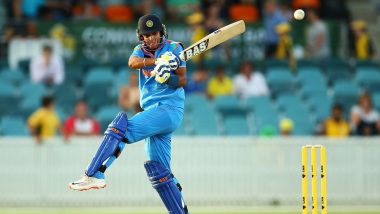For a country that's as cricket-crazy as India is, its amazing (read "really really unfortunate"), that the womens game, up until very recently, has got such little attention. As I understood during the course of my countless interactions with women cricketers of our country across generations, more than anything else, it had truly been the lack of will and want on behalf of the various stakeholders of the sport, that kept the women's game in oblivion for this long, more than anything else. Diana Edulji, now member of the Committee of Administrators that runs Indian cricket, and former captain, recalls in my book "Free Hit: The Story of Women's Cricket in India" how during the 2013 ICC women's World Cup that was held in India, she'd seen a crowd of red T-shirts walking along Marine Drive, headed towards their hotel.
It was the Indian women's cricket team, walking on the streets of Mumbai. They were not mobbed, as would have happened surely in the case of their male counterparts. In 2018, it's impossible that a similar scenario will be repeated. And all it took for that to change was the team's runners-up finish at the World Cup in England last year where they lost by an agonising nine runs. ICC Women's World T20 2018 Schedule & Timetable in PDF for Free Download: Date, Time & List of All WT20 Matches in India Time (IST).
This time around, at the T20 World Cup in the West Indies, Team India finds itself with yet another opportunity to create an impact and make a difference. India have never won a women's World Cup, in any format. The closest they've got is in the 50-over format in 2005 and 2017. This time around, under Harmanpreet Kaur's captaincy, they have a superb opportunity to change that. The blinder she played against New Zealand gave India just the start they needed.
Now that the team has reached the semi-final, the going gets tough. T20 is a difficult format to predict, and teams need to stay switched on for all 40 overs, else you never know when you lose your grip over the game. That makes pretty much all top six teams favourites to win the title. Australia, who have mastered this format better than the rest, and defending champions West Indies, who will be bolstered by the tremendous home support, will be the two big title favourites before the knock-outs begin.
India hasn't made it to the semi-finals of the tournament in the last three editions (2012, 2014, 2016). They've changed that around already, and will be raring to take things forward from the last four. Coach Ramesh Powar, still relatively new in his job, has been speaking about putting pressure on players while training so as to help them avoid succumbing to it in match situations.
It's heartening to see the amount of attention the team is getting. It would be interesting to see the viewership numbers from November 11, when the women's team was playing Pakistan in the T20 World Cup, while our men were playing a dead rubber against West Indies. If one were to go by social media trends, the women walked away as winners!
There is no doubt then that there is now a healthy appetite for women's cricket in India. And while the limelight and attention on the national team is every bit derserved, it's the domestic game that's crying for attention. The BCCI's revised contracts this year have made things marginally better for the girls, but it is only a tiny drop in the ocean. The first step towards growing any sport, irrespective of gender, is at the school level. It is here that those who care for the future of the sport need to invest in. They need to introduce it, nurture it, and keep it alive. The board (state boards as well) has also never been very proactive about tapping rural talent, an absolute need of the hour too.
That having been said, no change can happen and should be expected overnight. Like the legendary Jhulan Goswami says, if you sow a seed today, you're not going to wake up tomorrow morning and see it grow into a tree with fruits and flowers. That seed has been sown by this absolutely gritty bunch of women a year back, and slowly, but surely, changes are visible, even if it's just at the top for the moment -- pay hikes, a relatively improved calendar, and an effort to try and build a property like the hugely successful IPL for the women.
We called this book "Free Hit" because it best describes the condition Indian women's cricket finds itself in at the moment. The girls are free, they are fearless and this time around, come what may, they're going to remain unbeaten.
(Suprita Das is a sports journalist and winner of the RedInk Award for Excellence in Journalism. Her book "Free Hit: The Story of Women's Cricket in India" will release in early December.)
(The above story first appeared on LatestLY on Nov 16, 2018 06:46 PM IST. For more news and updates on politics, world, sports, entertainment and lifestyle, log on to our website latestly.com).













 Quickly
Quickly


